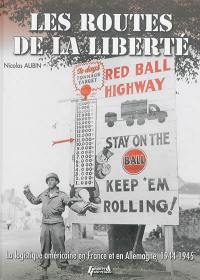
Fiche technique
Format : Relié
Nb de pages : 224 pages
Poids : 1655 g
Dimensions : 24cm X 32cm
ISBN : 978-2-35250-320-0
EAN : 9782352503200
Liberty roads
the American logistics in France and in Germany, 1944-45
Quatrième de couverture
Liberty Roads - Red Ball Express
The American logistics in France and in Germany, 1944-45
The Red Ball Express Highway is the nickname given to the supply route opened in August 1944 which stretched from the landing beaches to the American armies launched in an incredible pursuit throughout France. For three months, up to 6,000 trucks drove along this route. It symbolizes the opulence and power of American logistics. However, the generals complain in their memoirs about the lack of gasoline, ammunition and even warm clothing and cigarettes. Patton thought that the rear echelon services led by General Lee had failed in their mission and delayed the end of the war. It is this paradox which led to the writing of this book.
This investigation is more than just a detailed account of the campaign as seen from the rear, it is the first publication to cover in depth the American logistical effort during the Second World War in Europe : operational doctrines, tactics, techniques, equipment....
It takes us from the hushed offices of Washington to the decks of the Liberty Ships, the tops of the overhead cranes at Cherbourg, the steering wheels of the GMC trucks and the drivers' compartments of the Broadway Limited locomotives, in search of a Logistical revolution.
It describes how the Americans abolished the tyranny of distance by succeeding in placing a force of 61 divisions 5,000 kilometers from New York.
It reveals that the final stage of the supply chain, that of the Normandy beaches to the fighting men, had not been properly thought out. We discover that, far from what is commonly believed, the US Army was rationed from the outset on D-Day and that its logistical chain was dislocated from August to November 1944 due to an ill-suited doctrine and administrative quarrelling.
Finally, it was at the cost of formidable expedient means and remarkable innovations in the field that the US Army had become, in the spring of 1945, the only war machine capable of supplying long-term millions of soldiers and thousands of tanks deep within the enemy system.














